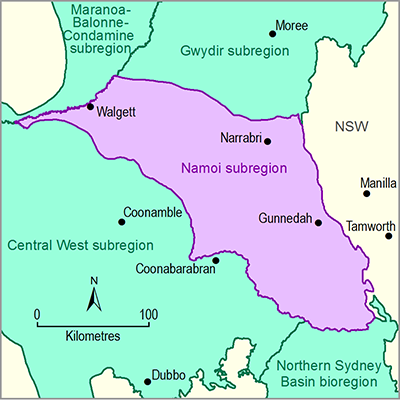- Home
- Assessments
- Bioregional Assessment Program
- Namoi subregion
- 1.1 Context statement for the Namoi subregion
- 1.1.7 Ecology
- 1.1.7.3 Ecological significance
There are a number of factors that contribute to the ecological significance of the Namoi river basin. The variation in climate combined with the variety of landforms results in a range of different ecosystems, communities and species residing in forest, woodlands, rangelands, riparian areas and the agricultural production landscape. The river basin contains a wide range of aquatic habitats including large areas of anabranch and billabong wetlands downstream of Narrabri. Although the Namoi does not contain extensive or nationally recognised wetland complexes, the floodplains downstream of Narrabri support many small lagoons, wetlands and anabranches as well as flood runners and extensive areas of floodplain woodlands (MDBA, 2012). Lake Goran is the only wetland of national importance in the river basin. However, there are numerous wetland communities that provide a range of aquatic habitats, and important refugia during drought.
In the Namoi CMA region there are 152 entities listed under the New South Wales Threatened Species Conservation Act plus four species listed in the EPBC Act. Of the 152 listings, 86 species are listed as vulnerable, 27 species are listed as endangered and four species are listed as critically endangered. There are also two populations listed as endangered and 15 communities listed as ecologically endangered.

